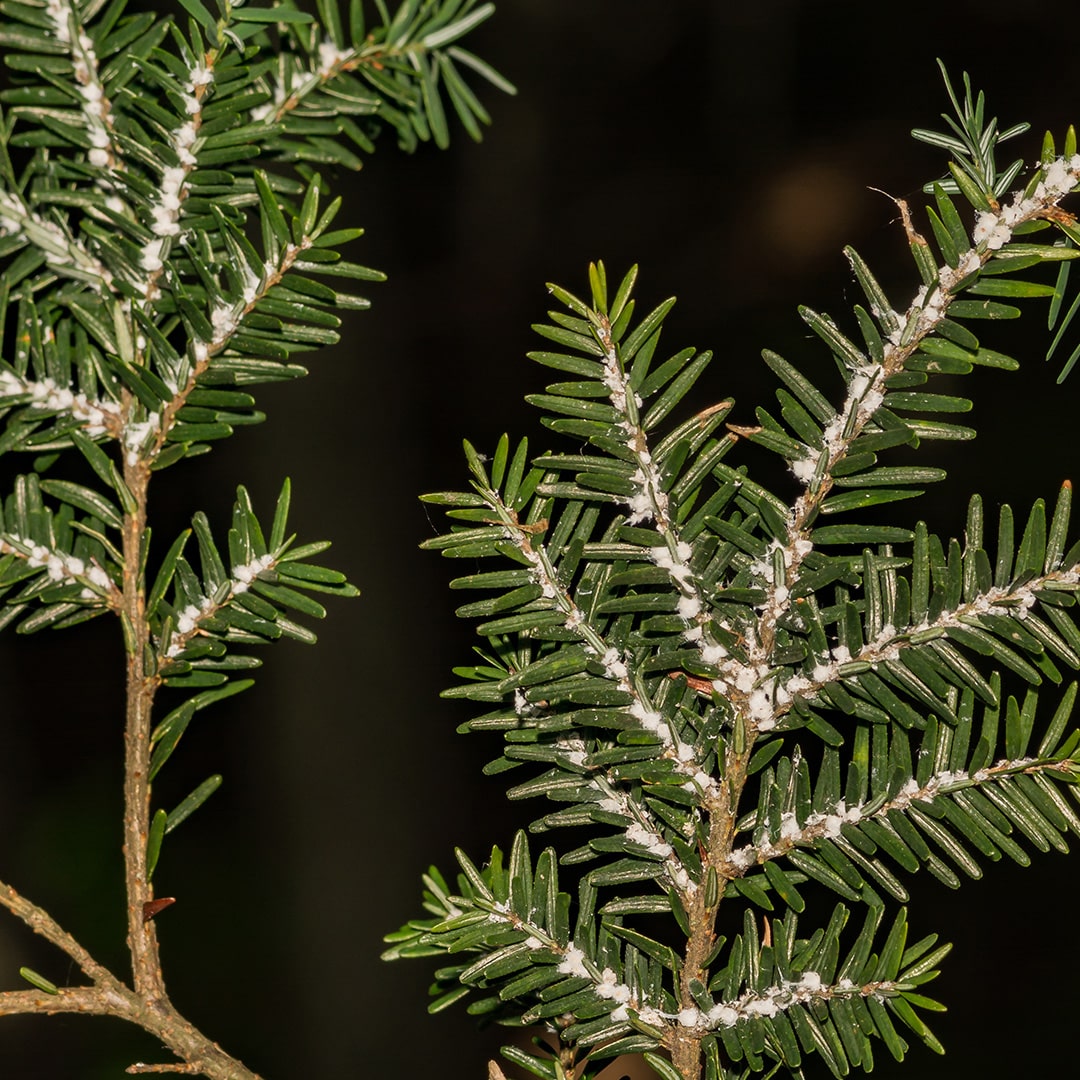Woolly Adelgids

Type: Insect
Appearance: Woolly adelgids are small, soft-bodied insects covered in a white, wool-like wax. They have piercing-sucking mouthparts and are often found on the branches and needles of certain coniferous trees.
Location: Woolly adelgids are often found in hemlock trees.
Woolly Adelgid Infestation Concerns
Woolly adelgids pose a significant threat to hemlock trees. These invasive pests feed on the sap of the trees, causing needle discoloration, premature needle drop, and, in severe cases, the death of the hemlock. Infestations can lead to the decline of hemlock populations, impacting the ecological balance of affected areas.
What Causes a Woolly Adelgid Infestation?
Woolly adelgids are introduced into new areas through the movement of infested plant material. Once established, they reproduce rapidly and can spread from tree to tree. Hemlock trees are particularly vulnerable to woolly adelgid infestations, and the pests can persist in various life stages throughout the year.
Signs of a Woolly Adelgid Infestation
- White, Woolly Masses: The presence of white, woolly masses on hemlock branches and needles is a clear sign of woolly adelgid infestation.
- Needle Discoloration: Infested hemlock trees may exhibit needle discoloration, with needles turning gray or brown.
- Premature Needle Drop: Severe infestations can lead to premature needle drop, resulting in a sparse and unhealthy appearance of the hemlock canopy.
Green Image Lawn Care Knows All About Woolly Adelgids
At Green Image Lawn Care, we possess in-depth knowledge to effectively address woolly adelgid infestations. Our professionals understand the behavior and lifecycle of these pests, enabling us to implement targeted and environmentally friendly control measures. Contact us today at 717-900-8144 for personalized solutions tailored to your yard’s specific pest control needs.
Need Help with Woolly Adelgids?
Call Green Image Lawn Care today at 717-900-8144 and let's talk about how we can help you with Woolly Adelgids and other insects.